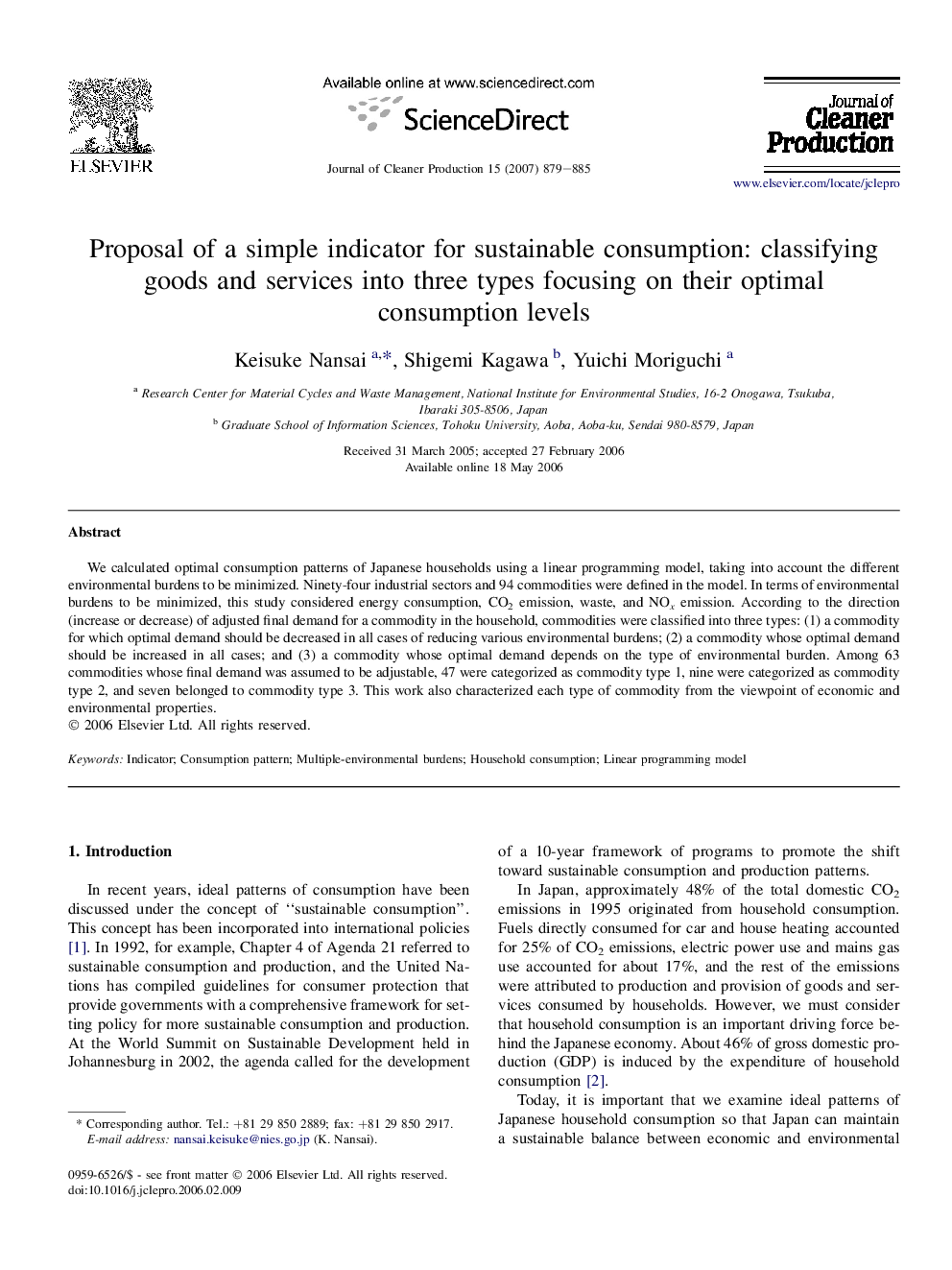| Article ID | Journal | Published Year | Pages | File Type |
|---|---|---|---|---|
| 1746688 | Journal of Cleaner Production | 2007 | 7 Pages |
We calculated optimal consumption patterns of Japanese households using a linear programming model, taking into account the different environmental burdens to be minimized. Ninety-four industrial sectors and 94 commodities were defined in the model. In terms of environmental burdens to be minimized, this study considered energy consumption, CO2 emission, waste, and NOx emission. According to the direction (increase or decrease) of adjusted final demand for a commodity in the household, commodities were classified into three types: (1) a commodity for which optimal demand should be decreased in all cases of reducing various environmental burdens; (2) a commodity whose optimal demand should be increased in all cases; and (3) a commodity whose optimal demand depends on the type of environmental burden. Among 63 commodities whose final demand was assumed to be adjustable, 47 were categorized as commodity type 1, nine were categorized as commodity type 2, and seven belonged to commodity type 3. This work also characterized each type of commodity from the viewpoint of economic and environmental properties.
